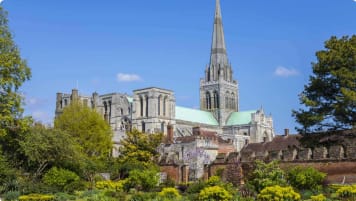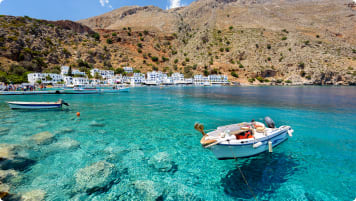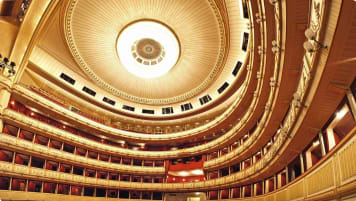Discovering the art and literature of England: Jane Austen, Shakespeare, and more
Explore the rich literary and artistic heritage of England on this small group tour, featuring Stratford-upon-Avon—Shakespeare’s birthplace and Anne Hathaway’s cottage—along with the breathtaking Lake District, a UNESCO World Heritage site, and Dickens' London. Guided by expert tour leaders and local specialists, you'll embark on curated day tours that offer a truly unique and immersive travel experience with like-minded enthusiasts.
From €11,385EUR
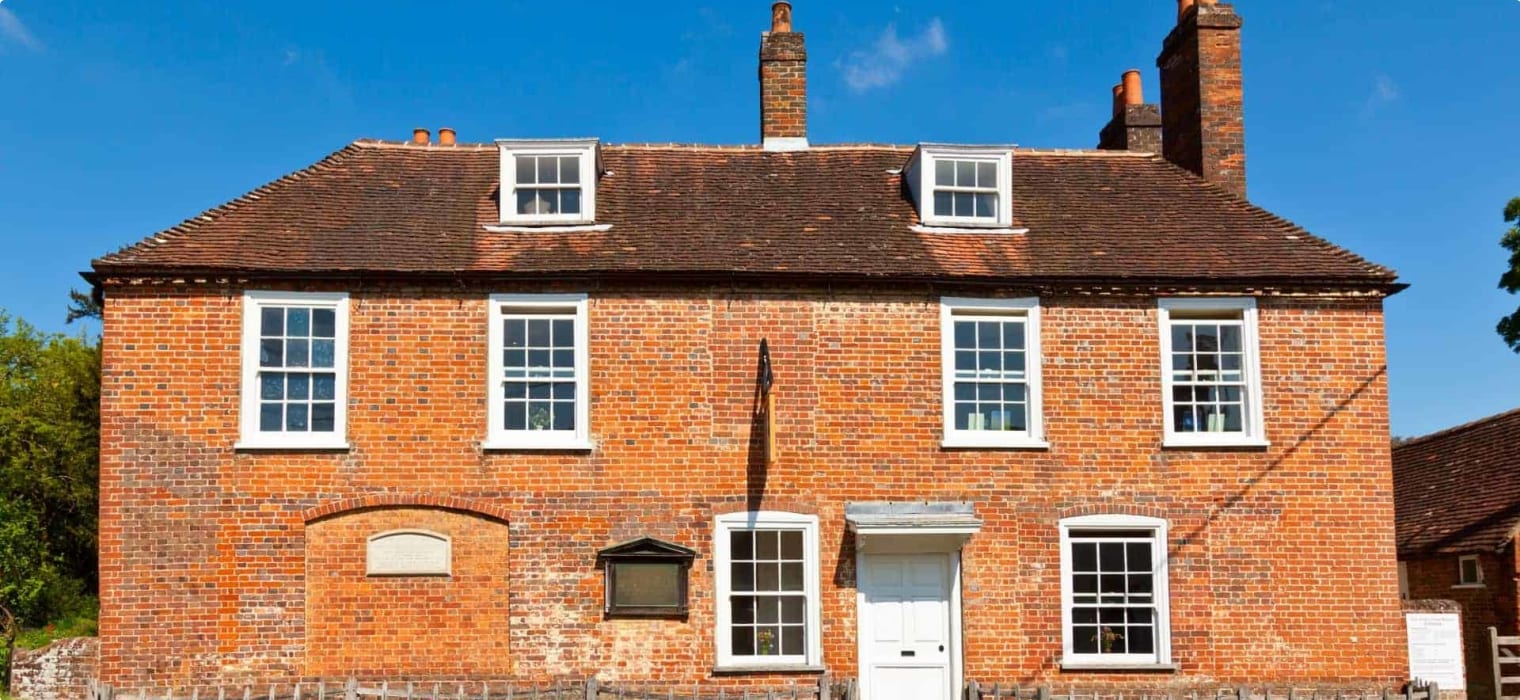
Highlights
- 1. Explore the majestic natural beauty of the Lake District, where we learn about the Romantic poets.
- 2. Walk through Constable country
- 3. Enjoy a visit to Chaucer's Canterbury
- 4. Enjoy a performance of the world-famous Royal Shakespeare Company, and visit the restored Globe Theatre in London.
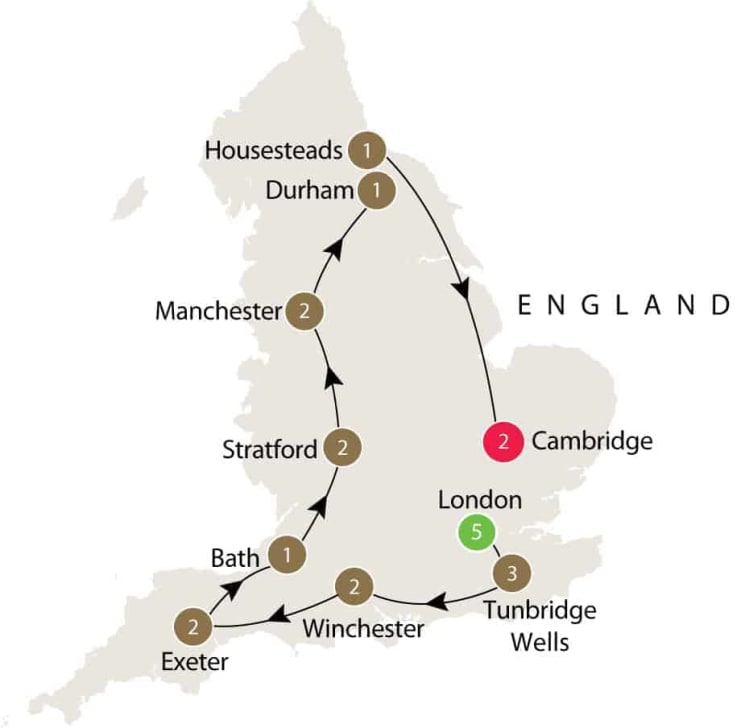
Departure Dates
| Departure Date | Price |
|---|---|
| 25 August 2025 Ends 15 September 2025 • 22 days €11,385 Twin €13,000 Single Pre-guaranteed | Selected |
| 31 August 2026 Ends 21 September 2026 • 22 days €11,812 Twin €13,427 Single Available | |
| 30 August 2027 Ends 20 September 2027 • 22 days €12,117 Twin €13,732 Single Available |
England literature and art small group tour
This tour introduces travellers to some of the most significant literary and artistic achievements of England and Wales. While travelling to numerous destinations of artistic significance in the British Isles, we deepen our knowledge of Shakespeare, Jane Austen, Thomas Hardy, The Bronte Sisters, William Wordsworth and the Lake District poets.
The interested traveller will be given the chance to visit many houses lived in by writers and artists from across the centuries. The house where Jane Austen wrote her novels is now a museum which we can visit. The romantic ruin of Tintern Abbey, which inspired both Turner and Wordsworth, is on our tour. We will walk though the charming country lanes of Constable country, take a hike over the Yorkshire moors, and listen to lectures by experts on topics as diverse as the Pre-Raphaelite Brotherhood and the novels of Thomas Hardy.
Over three weeks travelling around England, from south to north and back again, we will attempt to come to an understanding of a variety of writers and artists and the landscapes that inspired them. This small group tour is fully escorted. Odyssey Traveller engages a number of specialist guides along the way to bring the likes of Shakespeare, Jane Austen, Turner and others, to life in our mind's eye.
Here is a list of the painters and writers we will study on these small group tours England literature and art:
- J M W Turner
- Geoffrey Chaucer
- John Constable
- William Shakespeare
- Joshua Reynolds
- Jane Austen
- George Stubbs
- Thomas Hardy
- William Hogarth
- Bronte sisters
England literature and art small group tour itinerary
Highlights of the tour include touring Shakespeare's Globe Theatre, where we also enjoy a theatrical performance, as well as visiting the Charles Dickens Museum in London, where we discover more about this iconic nineteenth-century novelist.
We also take in the famous Bronte Parsonage in Haworth, and explore Jane Austen's house at Chawton. In addition, we experience the majestic natural beauty of the Lake District, a UNESCO World Heritage Site. We learn more about why this landscape inspired so much Romantic poetry in the late eighteenth and early-nineteenth century.
This trip also includes a literary pilgrimage to Shakespeare's birthplace in Stratford-upon-Avon. Here we visit the Holy Trinity Church and enjoy a play performed by the Royal Shakespeare Company.
These cultural tours to England are scheduled to commence once a year. Early reservations are advisable. You can also explore our country profiles on Britain and England and see all other Odyssey tour departures to these destinations.
For more details, click the ‘Top 5’ or ‘Itinerary’ buttons above! If you’re keen to experience this tour, please call or send an email. Or, to book, simply fill in the form on the right-hand side of this page.
Articles published by Odyssey about English Literature and Art
The following list of articles published by odyssey Traveller for mature aged and senior travellers to maximise their knowledge and enjoyment of Spain & England when visiting;
- Medieval British life
- Great Britain Travel tips
- Understanding British Churches
- English Village History
- Britain's National Trust.
- Roman roads
- Gargoyles and Grotesques; an understanding.
- Victorian Country life
- Jane Austen's England
- How to read the British landscape
- The Lake District for poets & Romantics
External articles to assist you on your visit to England
Gallery
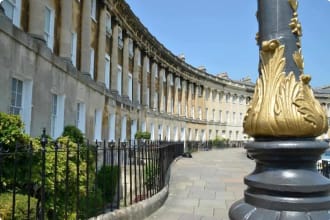
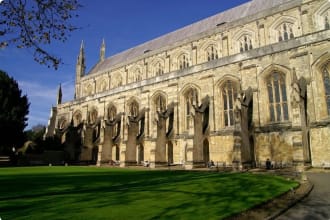
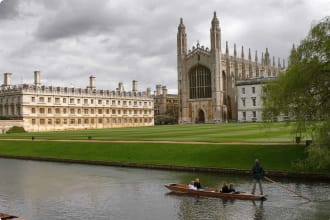
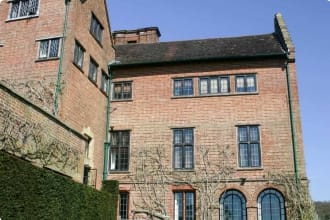
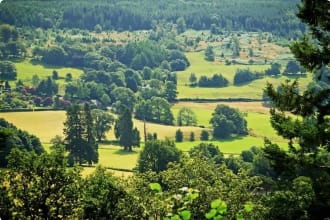
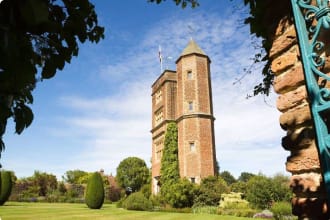
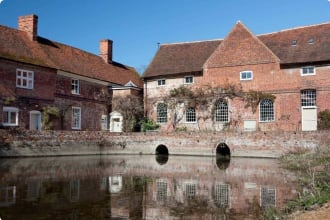
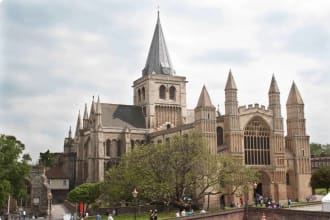
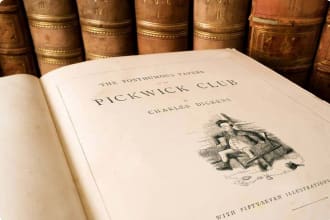
Itinerary
22 days
Day 1: London
Accommodation: London Lodge or similar
Arrive at London hotel by own arrangements.
In the afternoon meet with your Program Leader for a pre-tour briefing.
This will be followed by an early evening lecture on English literature by a local specialist.
A welcome dinner will be provided in a local restaurant.
(D)
Day 2: London
Accommodation: London Lodge or similar.
A morning visit to the Tate Gallery, where we focus on some of the most significant British artworks from the past. We enjoy learning from a specialist guide, who’ll explain the cultural and historical meanings of each painting viewed as part of the tour.
In the afternoon, we enjoy a guided tour of Shakespeare’s Globe Theatre, as well as a afternoon performance.
Evening will be at your leisure.
(B)
Day 3: London
Accommodation: London Lodge or similar.
This morning the group will transfer to Russel Square by public transport for a literary tour of the Bloomsbury area with a specialist guide visiting sites related specifically to Virginia Woolf and the Bloomsbury Group.
Afterward, we stop to see Lady Ottoline Morrell’s house on Gower Street on our way to the Charles Dickens Museum.
We will visit the home once lived in by Charles Dickens. This house is now a museum and gives an insight into the author’s life and work. This is where the author wrote Oliver Twist, The Pickwick Papers and Nicholas Nickleby. It’s where he first achieved international fame as one of the world’s greatest storytellers.
From the Dicken’s museum, it is a short walk to the Foundling Hospital which was supported by William Hogarth and Frederick Handel. Here we can visit the original building, specially filled with art to attract wealthy patrons to the charity, as well as the poignant exhibition on the lives of the foundlings. This was the UK’s first children’s charity and first public art gallery.
Afternoon: at leisure. You might like to take the opportunity to visit the Sir John Soane House Museum, filled with his eclectic collection, or the nearby Wallace Collection.
Sir John Soane’s Museum preserves the museum and library of distinguished 19th century architect Sir John Soane. At Soane’s request, the house has been left untouched since his death – almost 180 years ago.
Evening: Performance at the National Theatre. (If there is no appropriate performance, alternative arrangements will be made.)
(B)
Day 4: London
Accommodation: London Lodge or similar
In the morning we visit Frederick Leighton’s House, a museum in the Holland Park district of Kensington and Chelsea in London. The former home of the painter Frederic, Lord Leighton, it has been open to the public since 1929. His house is an ornate reflection of his artistic interests and contains a number of his more important works.
The afternoon will include a visit to the Victoria & Albert Museum where it will be possible to purchase lunch in the splendid tea rooms. Here you can spend as much or as little time as you like as you immerse yourself in the museum’s vast collection of decorative arts.
The Victoria & Albert Museum, the world’s largest museum of decorative arts and design, houses a permanent collection of over 4.5 million objects. It was founded in 1852 and named after Queen Victoria and Prince Albert.
Spend the evening at your leisure.
(B)
Day 5: London
Accommodation: London Lodge or similar
This morning we will travel by public transport to the British Library for a guided tour of the library and its amazing collection of original manuscripts.
From there we will transfer to Trafalgar Square to visit London’s fabulous National Gallery for a highlights tour. There will be time to then explore the gallery in greater depth and to go next door to the Portrait Gallery.
In the afternoon, we enjoy some free time to continue exploring the city.
(B)
Day 6: Tunbridge Wells
Accommodation: Royal Wells Hotel or similar
This morning we leave London by private coach and head towards Tunbridge Wells via Rochester and Canterbury.
In Rochester, a local guide will help us to explore. Our tour takes in the main sites associated with Dickens.
In Canterbury, we will have a local guide for a walking tour of the main city sites associated with Geoffrey Chaucer. A visit to the Cathedral and precincts will be included.
Dinner will be in our hotel this evening.
(B)
Day 7: Tunbridge Wells
Accommodation: Royal Wells Hotel or similar.
Today we visit Chartwell House, the principal adulthood home of Sir Winston Churchill. Churchill and his wife Clementine bought the property, located two miles south of Westerham, Kent, England, in 1922. Extensive renovations simplifying and modernising the home were undertaken directly, completely transforming it when complete.
Winston Churchill was one of Britain’s most famous Prime Ministers but he was also a journalist, historian and amateur artist. This morning we visit Chartwell, his home for many years.
In the afternoon we head to Sissinghurst Castle Gardens, created in the 1930s by Vita Sackville-West, poet and gardening writer, and her husband Harold Nicolson, author and diplomat. Sackville-West was a writer on the fringes of the Bloomsbury group who found her greatest popularity in the weekly columns she contributed as gardening correspondent of The Observer, which incidentally – for she never touted it – made her own garden famous. The garden itself is designed as a series of “rooms”, each with a different character of colour and/or theme, divided by high clipped hedges and pink brick walls.
In the late afternoon, we head back to our hotel in Tunbridge Wells.
(B)
Day 8: Tunbridge Wells
Accommodation: Royal Wells Hotel or similar
Today we visit Bateman’s, a 17th-century house located in Burwash, East Sussex, England. Author Rudyard Kipling lived in Bateman’s from 1902 to his death in 1936. His wife bequeathed the house to the National Trust on her death in 1939, and it has since been opened to the public. A local guide gives us an extensive tour of the house, after which we head to Smallhythe.
We visit Smallhythe Place, a half-timbered house built in the late 15th or early 16th century and since 1947 cared for by the National Trust. The house was lived in by the acclaimed Victorian actress Ellen Terry.
We then head to Rye, where we explore Lamb House, owned by novelist Henry James. This house was a regular haunt for many contemporary English literary figures when Henry James lived there. (B)
Day 9: Winchester
Accommodation: Winchester Royal Hotel or similar
Today we travel to Winchester via Compton.
In Compton, we stop to the visit the G F Watts Mortuary Chapel. G F Watts was another Victorian painter enormously popular in his own day but now often forgotten. His extraordinary Mortuary Chapel is well worth a visit. A visit to his nearby house and gallery may be possible if it is open on the day of our visit.
We then continue on to Winchester, where we enjoy a guided city tour including entrance to Winchester Cathedral, where Jane Austen is buried. We also walk past the house where she died. Jane Austen did not normally live in Winchester but would have visited the city. She spent the last few months of her life here to be close to her doctor. We also explore Winchester Castle. Afterwards, we visit Queen Eleanor’s Garden, before enjoying an evening at leisure.
(B)
Day 10: Winchester
Accommodation: Winchester Royal Hotel or similar
This morning our coach takes us on a tour of Austen country including a visit to her home of 8 years at Chawton. Here she wrote many of her best-known works on the tiny table displayed in the museum created from her former home. An introductory talk on Austen’s life and work will be included. The village of Chewton lies within the South Downs National Park.
In the afternoon, we return to Winchester for some free time to explore the city.
(B)
Day 11: Exeter
Accommodation: Mercure Exeter Southgate or similar
Today we explore the region made famous by novelist Thomas Hardy. We leave Winchester and travel south towards Dorchester and onto Lyme Regis.
A specialist guide will take us on a full day literary tour of the area. The morning’s tour will include entrance to Thomas Hardy’s birthplace and to Max Gate House. We explore the house in which Hardy was born, as well as Max Gate – the former home of Thomas Hardy. This is located on the outskirts of Dorchester, Dorset, England. It was designed and built by Thomas Hardy for his own use in 1885 and he lived there until his death in 1928. In 1940 it was bequeathed to the National Trust by Hardy’s sister and is now open to the public.
Our afternoon’s tour will concentrate on Lyme Regis and the region’s connections with Jane Austen and John Fowles. We stop to view the Cobb, the town’s famous harbour wall.
We then head to Exeter for the evening, where we enjoy a group dinner in our hotel.
(B, D)
Day 12: Exeter
Accommodation: Mercure Exeter Southgate or similar
Today we have specialist literary guide for a full day of touring the area. After breakfast, we head to Princetown, where we visit Dartmoor Prison Museum. We enjoy a specialist lecture on the literary history of the Museum, with a special focus on Evelyn Waugh, Agatha Christie, and Sir Arthur Conan Doyle, before heading to Jamaica Inn, where we enjoy a traditional pub lunch.
Lunch will be at Jamaica Inn made famous by the novel of Daphne du Maurier.
Time permitting there will be an afternoon visit to legendary Tintagel and the castle made famous by Mallory’s King Arthur.
Return to Exeter for the night.
A group dinner is offered this evening.
(B, L, D)
Day 13: Bath
Accommodation: Mercure Francis hotel or similar
Today we travel from Exeter to Bath. On the way we visit Greenway, the home of Agatha Christie. There is an opportunity to lunch in Glastonbury.
From here, we travel on to Bath, where we join a local guide for a walking tour of the city that takes in the main sights. We visit Queen Square, the Royal Crescent, and have the remainder of the day free to explore this gorgeous city.
(B)
Day 14: Stratford-upon-Avon
Accommodation: Alveston Manor hotel or similar
This morning, we visit the Holbourne Museum in Bath, which includes a talk on masterwork from the museum’s collection. The Holburne Museum is the city’s first public art gallery, home to fine and decorative arts built around the collection of Sir William Holburne. Artists in the collection include Gainsborough, Guardi, Stubbs, Ramsay and Zoffany.
From Bath, we travel to Stratford-upon-Avon via Tintern Abbey, where we will explore the Abbey’s connections with Wordsworth and Turner.
Dinner tonight will be at our hotel or in a local restaurant.
(B) (D)
Day 15: Stratford-upon-Avon
Accommodation: Alveston Manor hotel or similar
Today, we explore Stratford-upon-Avon, the birthplace of Shakespeare. We have a tour of the house where Shakespeare was raised, and stop to view Anne Hathaway’s Cottage. This cottage is a twelve-roomed farmhouse where Anne Hathaway, the wife of William Shakespeare, lived as a child in the village of Shottery, Warwickshire, England. It is located about 1 mile (1.6 km) west of Stratford-upon-Avon. Spacious, and with several bedrooms, it is now set in extensive gardens.
In the afternoon, we explore the Holy Trinity Church, before having some free time to explore the city at our own pace.
We meet in the evening for dinner and a performance by the Royal Shakespeare Company.
(B, D)
Day 16: Manchester
Accommodation: Novotel Manchester Centre or similar
After breakfast, we travel to Chatsworth House, with a guided tour of the magnificent grounds, house, and gardens.
Chatsworth House is a stately home in Derbyshire, England. It is in the Derbyshire Dales, about 3.5 miles (5.6 km) north-east of Bakewell and 9 miles (14 km) west of Chesterfield. It is the seat of the Duke of Devonshire and has been home to the Cavendish family since 1549.
Standing on the east bank of the River Derwent, Chatsworth looks across to the low hills that divide the Derwent and Wye valleys. The house, set in expansive parkland and backed by wooded, rocky hills rising to heather moorland, contains an important collection of paintings, furniture, Old Master drawings, neoclassical sculptures, books and other artefacts.
(B)
Day 17: Manchester
Accommodation: Novotel Manchester Centre or similar
This morning we enjoy a specialist lecture on the pre-Raphaelite movement, before taking a guided tour of the Manchester Art Gallery. Later on, we visit the city’s Town Hall, and enjoy lunch at a local cafe.
In the afternoon, we visit the Lowry Centre, a theatre and gallery complex situated on Pier 8 at Salford Quays, in Salford, Greater Manchester, England. It is named after the early 20th century painter L. S. Lowry, known for his paintings of industrial scenes in North West England.
The remainder of the day is at leisure.
(B)
Day 18: Durham
Accommodation: Skiddaw Hotel or similar
This morning, after breakfast, we drive to Haworth, where we take a guided tour of the Bronte Parsonage and Museum. The Brontë Parsonage Museum is a writer’s house museum maintained by the Brontë Society in honour of the Brontë sisters – Charlotte, Emily and Anne. The museum is in the former Brontë family home, the parsonage in Haworth, West Yorkshire, England, where the sisters spent most of their lives and wrote their famous novels.
Weather permitting, we can take a walk on the nearby moors to see the landscapes that inspired “Wuthering Heights”.
From Haworth, we drive on to the Lake District with a stop at the Arts and Crafts inspired, Blackwell.
Dinner tonight will be in our hotel.
After learning about the Brontes, we travel to Blackwell, where we enjoy a group dinner.
(B, D)
Day 19: Housesteads
The Lake District was made popular in the 19th century by the Romantic poets, particularly William Wordsworth, who later came to regret this new popularity. He felt that the tourists rather spoilt the peace of the area.
We will join the tourists as we travel around the area with our specialist literary guide. Our tour will include admission to two of Wordsworth’s homes, Dove Cottage and Rydal Mount.
In the afternoon, we take the National Trust Victorian steam launch across Coniston Water to Brantwood, the home of Victorian art critic (and well-known eccentric), John Ruskin.
(B)
Day 20: Cambridge
Accommodation: Overnight Arundel House Hotel, or similar.
Today we travel to Cambridge via Lincoln, where we spend a couple of hours visiting the Cathedral with its famous Medieval chained library.
We will arrive in Cambridge in the afternoon.
Dinner will be in the hotel or at a local restaurant.
(B)
Day 21: Cambridge
Accommodation: Overnight Arundel House Hotel, or similar.
Today we have a local guide for a full-day literary and arts tour of the area. We’ll drive through the countryside painted by Constable, visit Flatford, and take a walk through evocative Constable Country.
From there we’ll transfer to Sudbury for a visit to the Gainsborough House Museum before continuing to Grantchester. We stop here for tea and scones in the Orchard Tea Garden, which is associated with Rupert Brook and his literary friends.
Our farewell dinner tonight will be at a local restaurant
(B, D)
Day 22: Cambridge
Our tour concludes after breakfast.
Trains from here run frequently to London and then to Heathrow, or you might like to spend a little extra time in Cambridge.
(B)
Tour Notes
- Group size is limited to a maximum of 16 participants.
Includes / Excludes
What’s included in our Tour
- 21 nights in ensuite accommodation in Britain.
- 21 breakfasts and 11 dinners.
- Applicable entry fees and services of local guides.
- Gratuities and necessary tips.
- Transport, lectures and field trips as indicated.
- Touring by comfortable and modern coach.
- Services of a tour leader.
- Detailed preparatory information.
What’s not included in our Tour
- Return economy class international airfare and departure taxes.
- Comprehensive travel insurance.
- Meals not specified in the itinerary.
- Items of a personal nature, such as telephone calls and laundry
Participants must be able to carry their own luggage, climb and descend stairs, be in good health, mobile and able to participate in 3-5 hours of physical activity per day, the equivalent of walking / hiking up to 8 kilometers per day on uneven ground.
Book now
Make it a private tour
Easing your journey
Crossing international borders with restrictions
The list of requirements to travel internationally has changed and will continue to change for several years. Odyssey is here to assist you in managing your way through these requirements:
For more information see our Crossing international borders with restrictions page.
Book With Confidence
If less than 30 days before your tour starts you are unable to travel as a result of Government travel restrictions, Odyssey Traveller will assist you with a date change, provide you with a credit or process a refund for your booking less any non-recoverable costs.
See Terms and conditions for details.
Peace of Mind Travel
The safety of our travellers, tour leader, local guide and support staff has always been our top priority and with the new guidelines for public health and safety for keeping safe for destinations around the world, we’ve developed our plan to give you peace of mind when travelling with us.
See Peace of Mind Travel for details.
Reading List Download PDF
The House of Fiction: From Pemberley to Brideshead, Great British Houses in Literature and Life
Phyllis Richardson
Houses in literature have captured readers’ imaginations for centuries, from Gothic castles to Georgian stately homes, Bloomsbury townhouses and high-rise penthouses. Step on to a tour of real and imagined houses that great English writers have used to reflect the themes of their novels… houses that became like characters themselves, embodiments of the social and historical currents of their time.
Phyllis Richardson takes us on a journey through history to discover how authors’ personal experiences in their homes helped to shape the imaginative dwellings that have become icons of English literature:
Virginia Woolf’s love of Talland House in Cornwall is palpable in To the Lighthouse, just as London’s Bloomsbury is ever-present in Mrs Dalloway. E.M. Forster’s childhood home at Rook’s Nest mirrors the idyllic charm of Howards End. Evelyn Waugh plotted Charles Ryder’s return to Brideshead while a guest at Madresfield. Jane Austen was no stranger to a manor house or a good ballroom. And Horace Walpole’s ‘little Gothic castle’ in Twickenham inspired him to write the first English Gothic novel, The Castle of Otranto.
But the English country house, from the idyllic to the unloved, is also viewed through a modern lens – Kazuo Ishiguro’s Darlington Hall, Ian McEwan’s Tallis House, Alan Hollinghurts’s Two Acres.
Using historic sources, authors’ biographies, letters, news accounts, and the novels themselves, The House of Fiction presents some of the most influential houses in Britain through the stories they inspired, while offering candid glimpses of the writers who brought them to life.
This Is Shakespeare
Emma Smith
A THE TIMES BOOK OF THE YEAR 2019
'The best introduction to the plays I've read, perhaps the best book on Shakespeare, full stop' Alex Preston, Observer
'It makes you impatient to see or re-read the plays at once' Hilary Mantel
A genius and prophet whose timeless works encapsulate the human condition like no others. A writer who surpassed his contemporaries in vision, originality and literary mastery. Who wrote like an angel, putting it all so much better than anyone else.
Is this Shakespeare? Well, sort of.
But it doesn't really tell us the whole truth. So much of what we say about Shakespeare is either not true, or just not relevant, deflecting us from investigating the challenges of his inconsistencies and flaws. This electrifying new book thrives on revealing, not resolving, the ambiguities of Shakespeare's plays and their changing topicality. It introduces an intellectually, theatrically and ethically exciting writer who engages with intersectionality as much as with Ovid, with economics as much as poetry: who writes in strikingly modern ways about individual agency, privacy, politics, celebrity and sex. It takes us into a world of politicking and copy-catting, as we watch him emulating the blockbusters of Christopher Marlowe and Thomas Kyd, the Spielberg and Tarantino of their day; flirting with and skirting round the cut-throat issues of succession politics, religious upheaval and technological change. The Shakespeare in this book poses awkward questions rather than offering bland answers, always implicating us in working out what it might mean.
This is Shakespeare. And he needs your attention.
Shakespeare: A Book of Quotations
William Shakespeare
Shakespeare is without doubt the most quoted writer in English. His plays and poems comprise an inexhaustible source of memorable and often profound thoughts beautifully and concisely expressed. This remarkably affordable volume presents over 400 quotations conveniently arranged by topic: love, marriage, conduct and morality, truth, beauty, time, death, music, and more.
Included are such timeless observations as: "All that glitters is not gold," "Brevity is the soul of wit," "How sharper than a serpent's tooth it is/ To have a thankless child"; "While you live, tell truth and shame the devil!"; "The very substance of the ambitious is merely the shadow of a dream," and many more. Romantic thoughts receive a particularly rich treatment; extensive selections on the subject of love include quotes from the plays ("The course of true love never did run smooth"; "Speak low if you speak love") and sonnets ("For thy sweet love remember'd such wealth brings,/ That then I scorn to change my state with kings"). Each quote bears a complete citation.
Ideal for writers, speakers, students of literature, and any lover of Shakespeare's works, this inexpensive treasury lends itself admirably to a virtually endless number of uses, from casual browsing to designing personal greeting cards.
Shakespeare in a Divided America
James Shapiro
From the author of 1599, a fresh perspective on the history of the United States - and a timely reminder of Shakespeare's indelible influence. Shakespeare's position as England's national poet is established and unquestionable.
But as James Shapiro illuminates in this revelatory new history, Shakespeare has long held an essential place in American culture. Why, though, would a proudly independent republic embrace England's greatest writer? Especially when his works enact so many of America's darkest nightmares: interracial marriage, cross-dressing, same-sex love, tyranny, and assassination?
Investigating a selection of defining moments in American history - drilling into issues of race, miscegenation, gender, patriotism and immigration; encountering Presidents, activists, writers and actors - Shapiro leads us to fascinating answers and uncovers rich and startling stories.
But perhaps most pressingly, we learn how, in Trump's America, the staging of his work has provoked threats of violence and has become a battleground for freedom of speech.
In Search Of Shakespeare
Michael Wood
Almost 400 years after his death, William Shakespeare is still acclaimed as the world's greatest writer, and yet the man himself remains shrouded in mystery. In this absorbing historical detective story, the acclaimed broadcaster and historian Michael Wood takes a fresh approach to Shakespeare's life, brilliantly recreating the turbulent times through which the poet lived: the age of the Reformation, the Spanish Armada, the Gunpowder Plot and the colonization of the Americas.
Drawing on an extensive range of sources, Michael Wood takes us back into Elizabethan England to reveal a man who is the product of his time - a period of tremendous upheaval that straddled the medieval and modern worlds. Using a wealth of unexplored archive evidence the author vividly conjures up the neighbourhoods of the Elizabethan London where Shakespeare lived and worked during his glittering career. Full of fresh insights and fascinating new discoveries, this book presents us with a Shakespeare for the twenty-first century: a man of the theatre, a thinking artist, playful and cunning who held up a mirror to his age, but who was also, as his friend Ben Jonson said, 'not of an age, but for all time'.
Discovering the art and literature of England: Jane Austen, Shakespeare, and more


